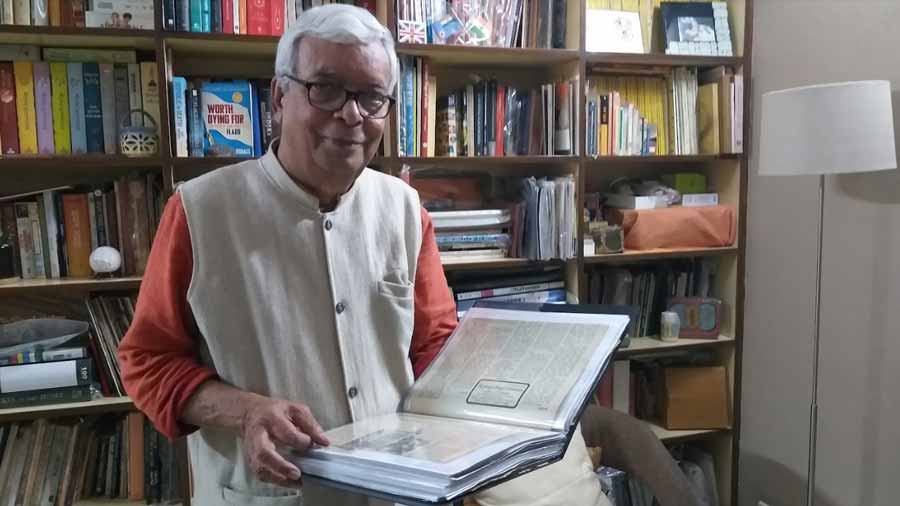In the south Kolkata neighbourhood of Katju Nagar, near a shining shopping mall, stands a humble house that by rights can be called a hidden museum of the flags of the world.
Its resident Sekhar Chakrabarti, a trained engineer, even at the ripe age of 77, still keeps his eyes and ears open to any piece of information related to flags of the world. His unabated enthusiasm in accumulating and recording the history and evolution of various kinds of flags and memorabilia have made him a doyen among Indian vexillologists. He is certainly the most predominant in Bengal, working on his passion for more than 60 years without any financial interest.
And though this passion has culminated into a goldmine of history, Kolkata does not care much about it.
Born in Shimla during World War II and then based in Rangoon where his father was an employee of Burma Railways, Sekhar finally landed in Calcutta’s Katju Nagar in 1950 as a refugee.
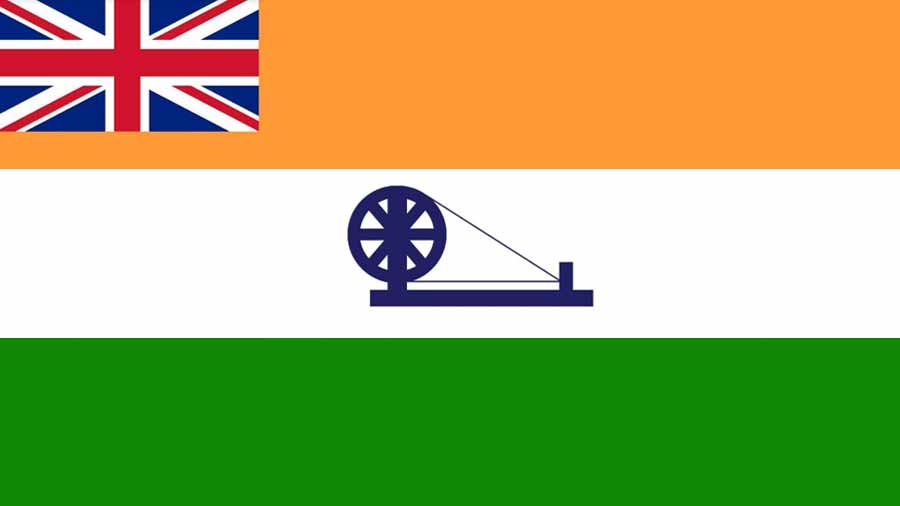
The Indian National Flag, as thought up by Lord Mountbatten in 1947 – from Sekhar’s collection
Growing up in a refugee colony in the 1950s may not have been a conducive way to get addicted to a hobby, but Sekhar was blessed with a father who had a habit of keeping newspaper clippings of historical events. And his father’s friend Nripen Guha, a skilled cricketer, was an avid collector of stamps. Young Sekhar picked up the habit from him and it became his only hobby during his school days.
In 1962, during the Chinese invasion, he participated in an exhibition with his collection of stamps, where the then-president of the Indo-American Society, S.P. Chatterjee, spotted him and encouraged him to take the passion seriously with a more specific focus.
Sekhar chose ‘Flags on postal stamps’ as the subject of his collection and thus began his tryst with flags, which still inspires him to travel the world, speaking and learning about the subject. Soon, anything related to flags became his area of interest and there was no looking back.
“I started without even knowing how to collect information on flag culture, but began my work anyway,” says Sekhar.
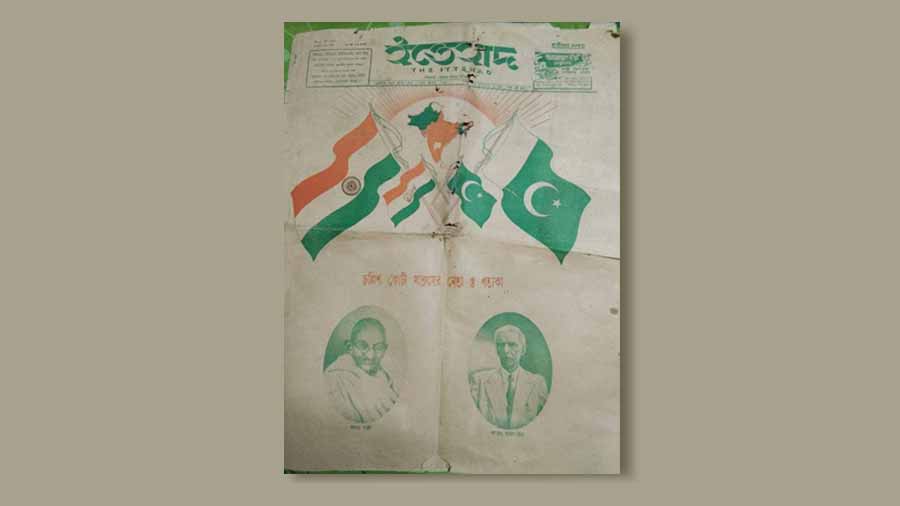
India’s and Pakistan’s flag on an East Pakistan newspaper – from his collection
From 1965 to 1982, he supplemented spending hours in the libraries of the British Council and USIS, as well as the National Library, by collecting rare books and periodicals containing historical and technical details of the flags of various organisations, nations and religious institutions.
Though few paid much attention to his hobby, his letters to various newspapers and periodicals on the subject started getting published. One was published in Desh, where he rectified a flag-related fact published in an article written by Vivekananda scholar Shankari Prasad Basu – that was acknowledged by the writer.
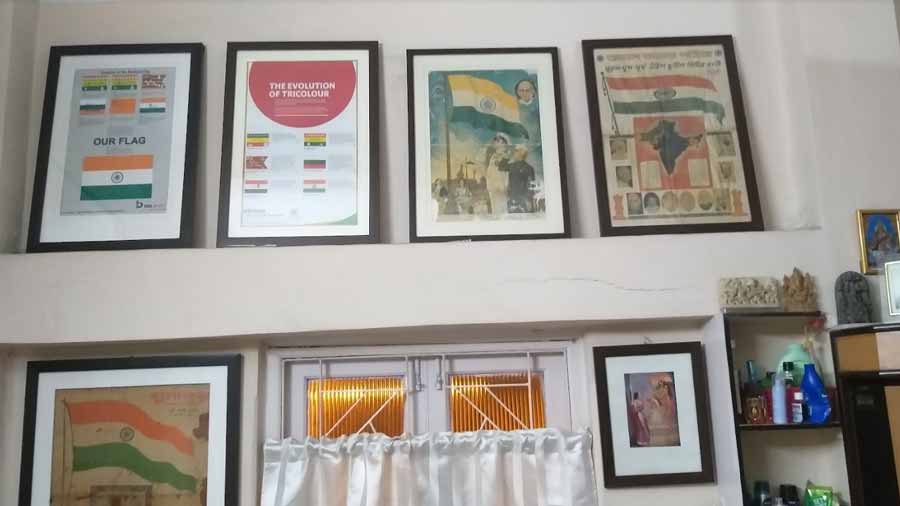
The wall of his living room
He also wrote to the Flag Research Centre in the U.S. and got immediate appreciation from its president, Whitney Smith. This was when Sekhar realised that though his passion and knowledge may have little value in India, it was given paramount academic importance abroad.
The global flag meet, known as the International Congress of Vexillogy (ICV), a summit of experts in this field invited Sekhar to attend and represent India at Rotterdam in 2013. He was also selected as one of the speakers – a rare distinction in such a forum.
“I decided to speak on ‘Swastika – It’s origin, evolution, use and abuse’ but my topic was initially rejected considering it’s connection with Nazi symbolism. However, the president of the organisation, Michel Lupant, encouraged me, but warned that I may be stopped on the stage by those for whom the Nazi era is still a nightmare. Thankfully, I was allowed to speak and a big applause followed,” he said.
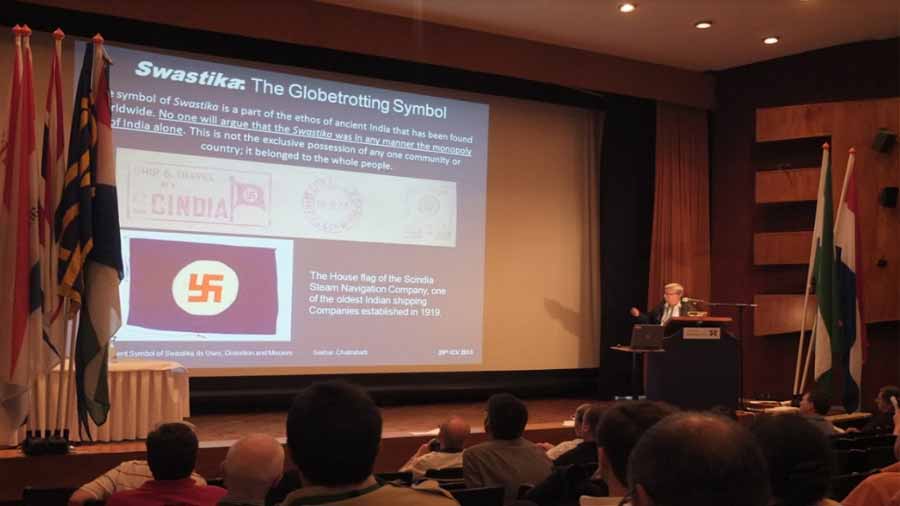
Sekhar speaks at the International Congress of Vexillology at Rotterdam in 2013
Sekhar also participated in two more global summits of vexillologists – in Sydney in 2015 and in London in 2017. “In Sydney, I spoke on Sister Nivedita, who was the world’s first female flag designer and not Betsy Ross, who was an upholsterer — not the designer of flag of the United States,” he said.
“My presentation on Sister Nivedita and her flag with ‘Vande Mataram’ stitched on surprised Australia and it was covered by Sydney television stations and the Sydney Morning Herald newspaper. The information was unknown to most of delegates, who all found it amazing,” he said.
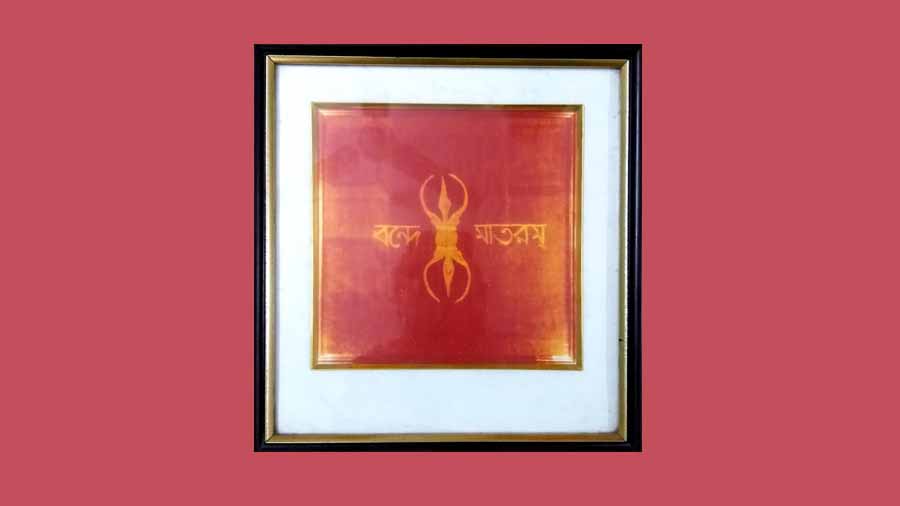
The flag designed by Sister Nivedita
In 2017, at the London conference, Sekhar spoke on how flags of major political parties gradually become the flag of the country with some modifications. Again, his subject and information were highly appreciated by the international audience.
Over the last few decades, he has collected whatever flag-related information and memorabilia he has come across. From the smallest woven national flag of India to a piece in The Statesman reporting Mahatma Gandhi’s apathy towards the national flag are all there in his collection. It is a ‘you name it and he has it’ kind of collection that Sekhar has accumulated in his house over the years.

The smallest woven National Flag of India
Anything related to flags is a subject of study for Sekhar. He keeps flag-related reports and testimonials, and old newspapers and posters that show the Indian flag in various forms and shapes are his favourite collectibles. He has also authored a book titled The Indian National Flag Unfurled Through Philately, which is a collector’s delight.

Sekhar Chakrabarti’s book is a collector’s delight
Nearing 80, he still retains his encyclopaedic knowledge. “We do not know many interesting facts about our own flag. Does anyone know that before Jawaharlal Nehru hoisted the national flag of Independent India on August 15, 1947, non-resident Indians in Canberra, Australia, hoisted it a few hours before due to the time difference? They hoisted it at 7.30am IST, while Nehru did it at 10.30am IST in Delhi,” he informed.
“Another interesting trivia is that in Minicoy Island, off the Kerala coast, the Union Jack was allowed to fly till April 1, 1956 – nearly nine years after India’s Independence,” he said.
He said it pains him to hear the myths and half-truths on various flag stories in the popular narrative. One relates to Madam Bhikhaji Cama unfurling an Indian flag at the International Socialist Congress held at Stuttgart, Germany, in 1907. Popular history says it was designed by her, but in actuality, it was designed and hoisted in Calcutta by Bengali nationalist Hemchandra Kanungo in 1906, he clarifies.
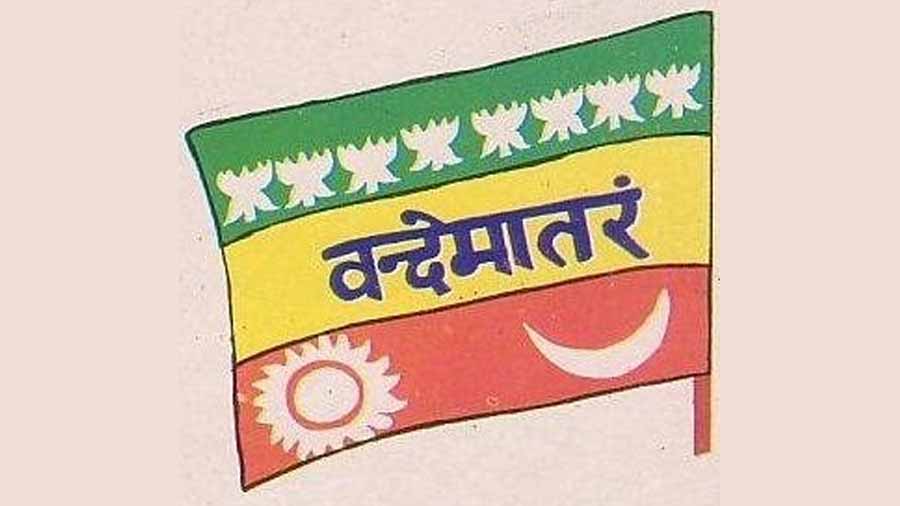
The flag unfurled by Madam Bhikhaji Cama at the International Socialist Congress held at Stuttgart, Germany, in 1907
“We neither study nor preserve historical flags,” he laments. “It is sad that the flags hoisted by Nehru on August 16, 1947, at Red fort and by C. Rajagopalachari at Calcutta’s Raj Bhavan on August 15, 1947, are both lost. It is a national shame,” he says.
The pandemic stopped Sekhar from traveling to Slovenia, where the next ICV was scheduled to be held. “I will go to wherever the next ICV may be held – I am already preparing my presentation.”
The sadness in his voice in noticeable as he says, “We have no idea how the study of flags is honoured in other countries.” He talks about a Chinese friend whose passion in studying flags from China’s history drew the attention of the government and was given the honour of hoisting the national flag at the Beijing Olympics. “This is beyond imagination in India. Here, only political leaders have the right of hoisting the flag,” he says.
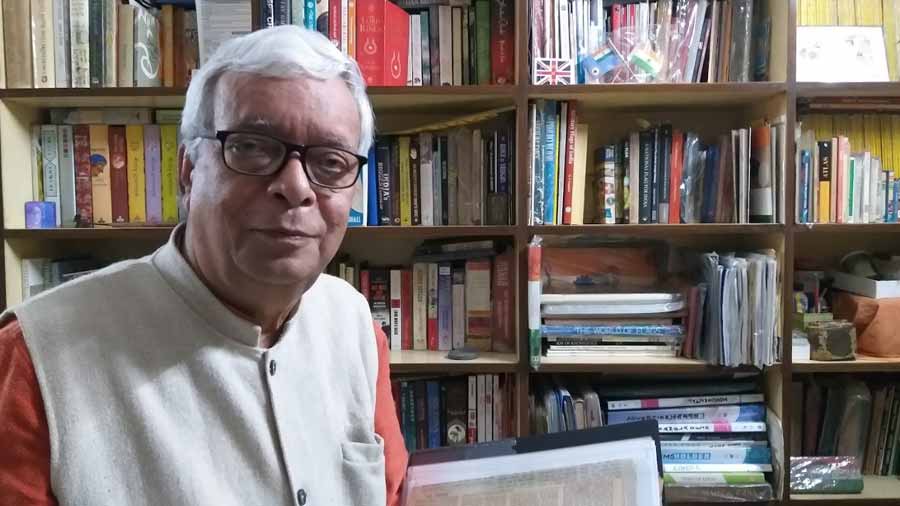
‘I find no lack of interest among common people about flags – the only thing they need is proper orientation,’ Sekhar says
Sekhar now has plans of converting his home into a small museum. However, he also knows that it will be impossible unless the government comes forward to help.
“I find no lack of interest among common people about flags – the only thing they need is proper orientation on the subject with interesting facts and figures. Alas, such an initiative is missing in this country,” says the vexillologist.
